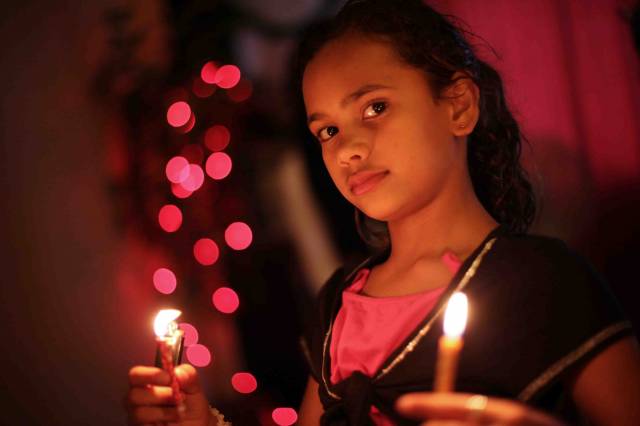
 Oh to be young again. Australian Genevieve Bailey takes a look at youth around the world in her unique documentary I Am Eleven, covering 15 countries and interviewing 11 year olds from all walks of life. Why eleven you ask? Because this was an apparent age of innocence for Bailey, and after being involved in a horrific accident and suffering from the loss of her father all at the age of 23, eleven conjures up a time in her life when she was truly happy, and indeed had the world at her feet.
Oh to be young again. Australian Genevieve Bailey takes a look at youth around the world in her unique documentary I Am Eleven, covering 15 countries and interviewing 11 year olds from all walks of life. Why eleven you ask? Because this was an apparent age of innocence for Bailey, and after being involved in a horrific accident and suffering from the loss of her father all at the age of 23, eleven conjures up a time in her life when she was truly happy, and indeed had the world at her feet.
Seeing the world through the eyes of a child is a wonderful experience which we adults often forget, and one which Bailey catches very well. From the orphanage in India to the Pakistani boy in London, from the French boy living off the land in the south of France to the Aboriginal girl and her Muslim refugee friends in Melbourne, and the Thai elephant-riding trainee monk to the English ex-pat studying creative writing in the Czech Republic; I Am Eleven captures a great range of youthful innocence and wide eyed wonder in regards to topical social and environmental issues as well as emotional quandaries. All the big questions are covered: school, bullying, friends, family, religion, race, environment, romance, social status, hobbies, travel and more.
The thing that makes this documentary truly endearing is obviously the children themselves. It’s easy to forget that when you are born you are spawned with no built in prejudices, opinions or negative connotations towards others. Seemingly this all happens after you are eleven as all the children interviewed are warm and all-encompassing when it comes to questions about their fellow man and don’t seem to understand the idea of disliking someone based on religious preferences, social standing, color of their skin or the like. This is a refreshing thing to see in a world that seems to be spiraling out of control in regards to such matters of late. But the most noticeable of threads seemed to be in the question of future exploits, when the children were asked what they wanted to be when they grow up. There was a glaring separation between the answers of the more well-off children of the west and the poorer, more challenged children of developing worlds – that being the former wanted to be actors, dancers, writers and more self-indulgent roles, whereas the latter all wanted to be doctors, teachers, nurses, pilots and swayed more towards helping people. Clearly growing up in a world full of comfort, money, rampant consumerism and flash in the pan entertainment dulls the yearning to be a good Samaritan somewhat, whereas growing up without those things and a lot less seems to fuel the humanitarian fire.
Nonetheless all of these children are sweet, kind, open and without judgment. If only we could stay that way throughout the years the world would be a very different place. However different these children and their cultures and circumstances were there was one outstanding uniting factor which all visibly enjoyed. It bought joy to their hearts and smiles to their faces, and that was the ancient art of music and dance. The local displays from each country ranging from traditional Bollywood dancing to Swedish rap to Moroccan drums were intoxicating and beautiful and bought a smile to the face of all involved, showing the power of music and movement can move even the most downtrodden hearts. Even a jaded old adults.